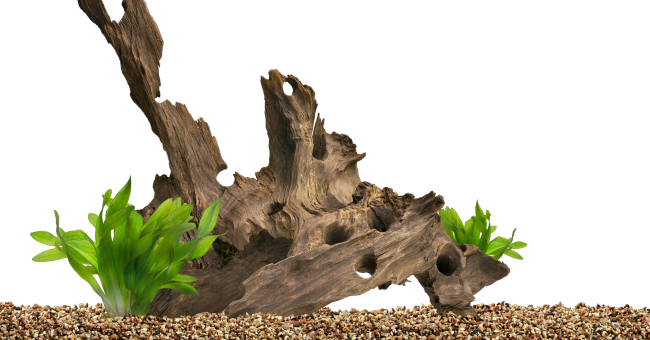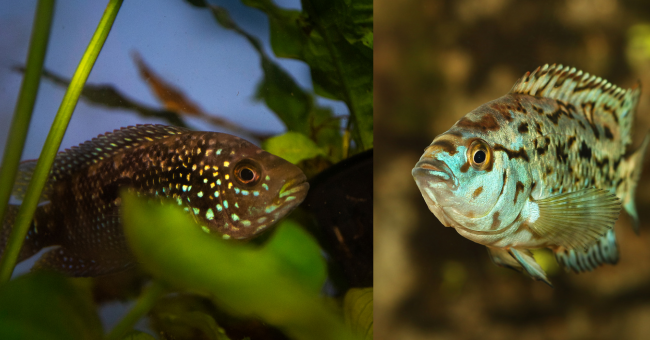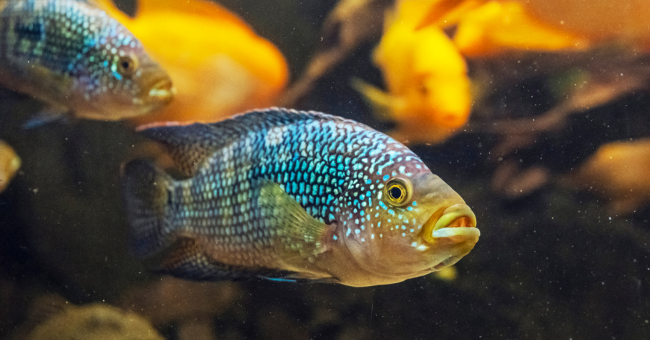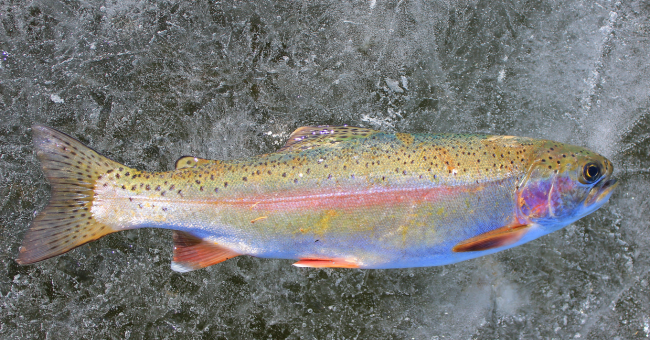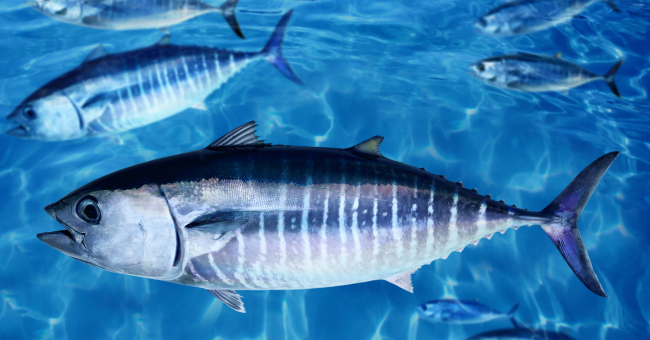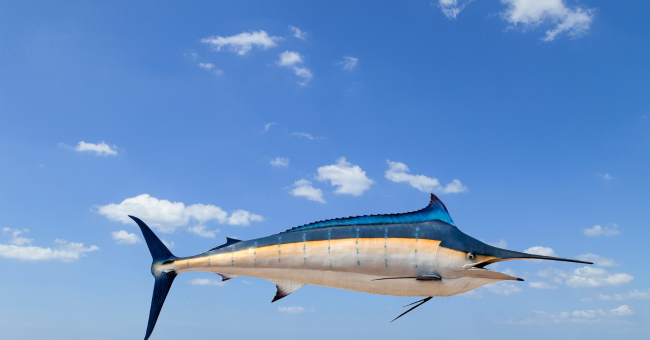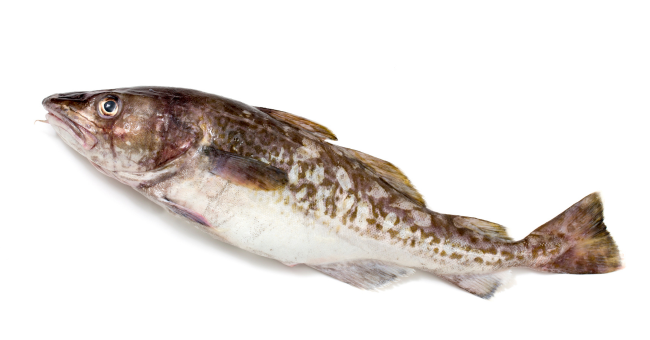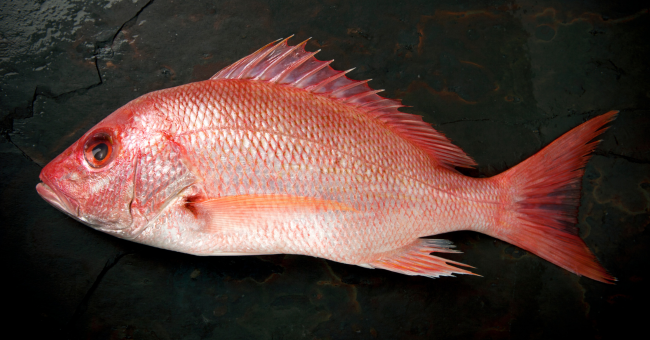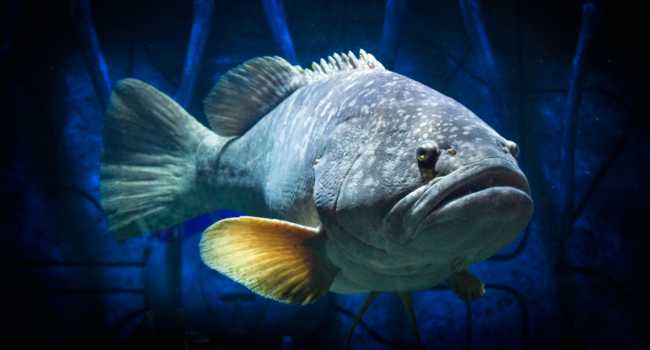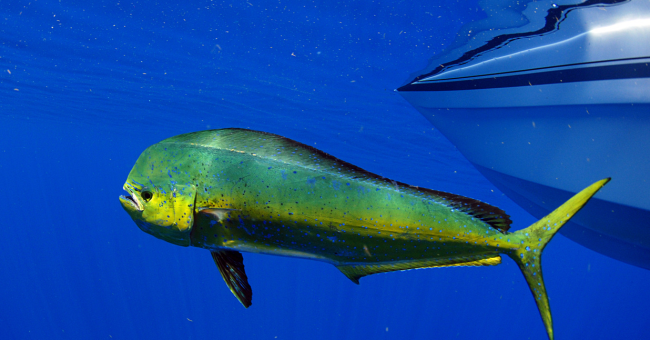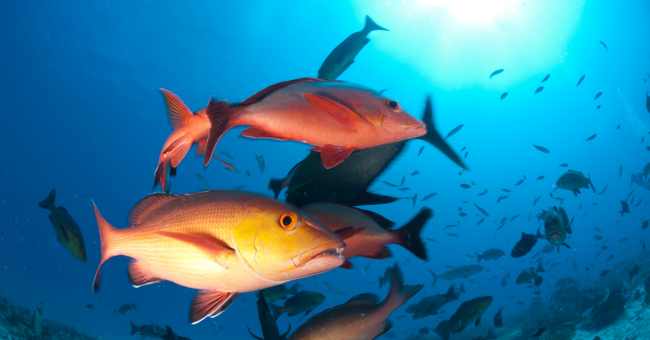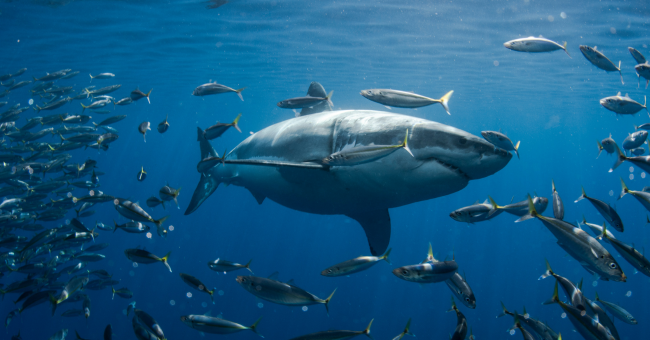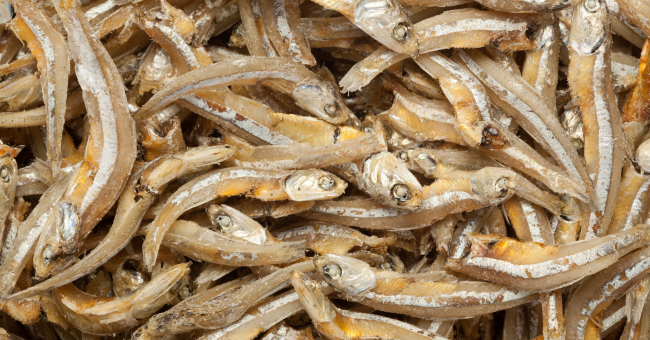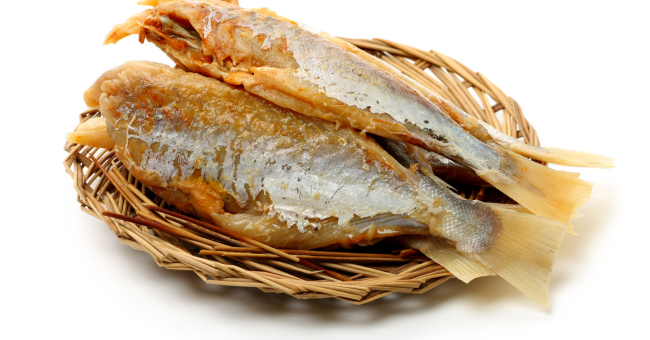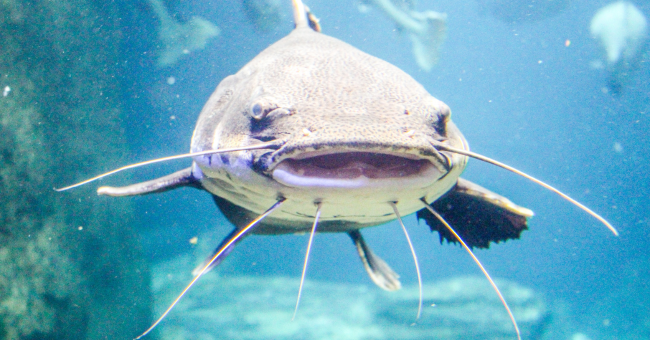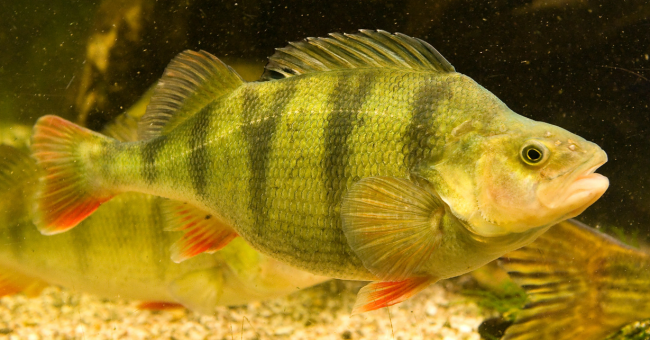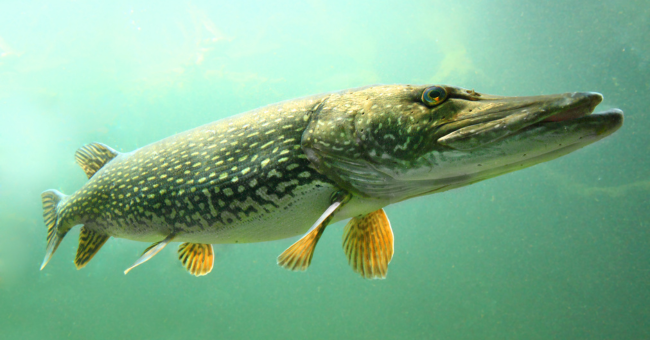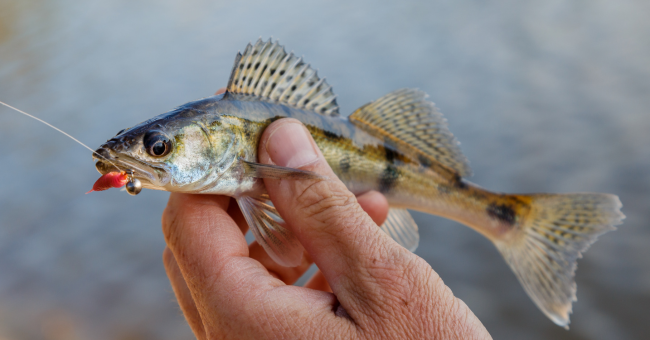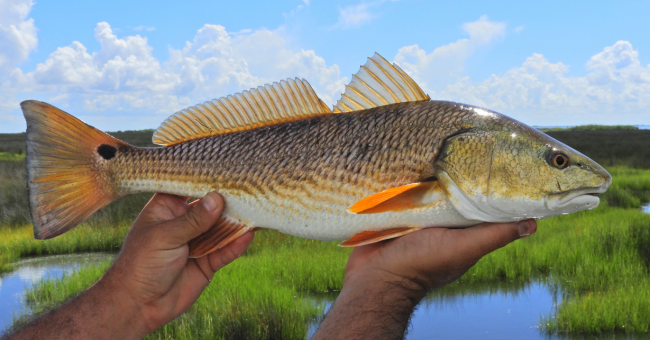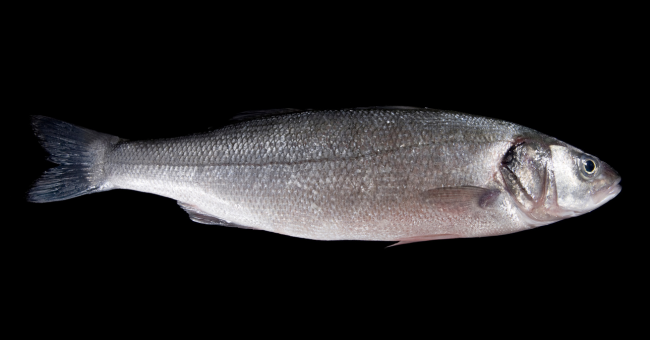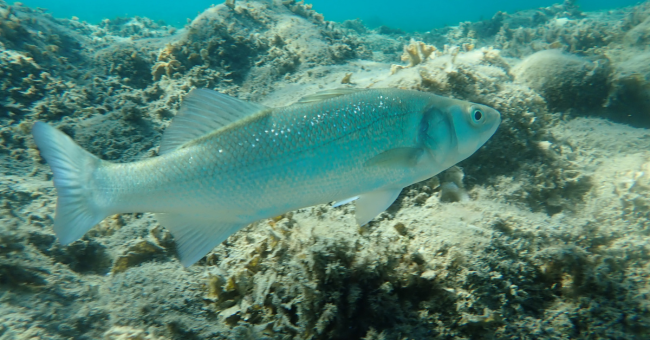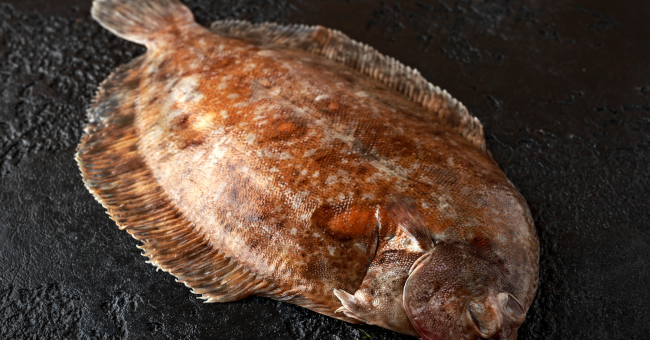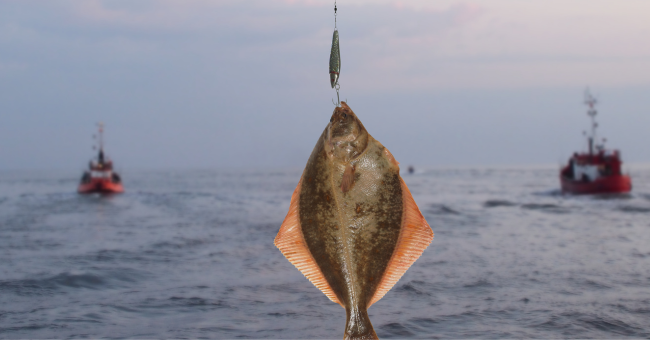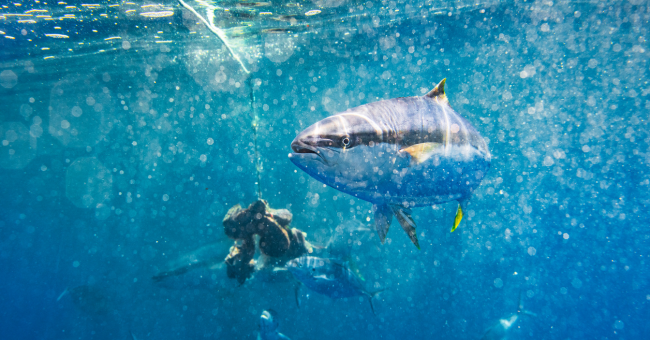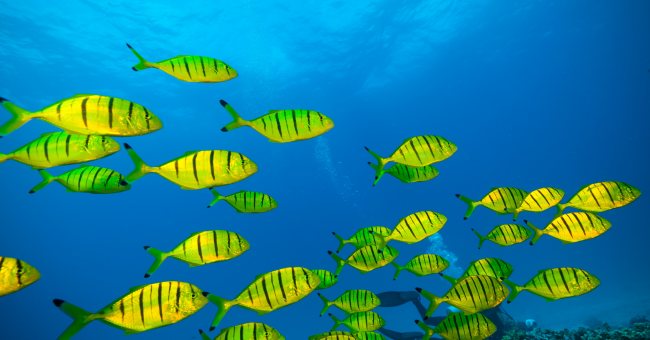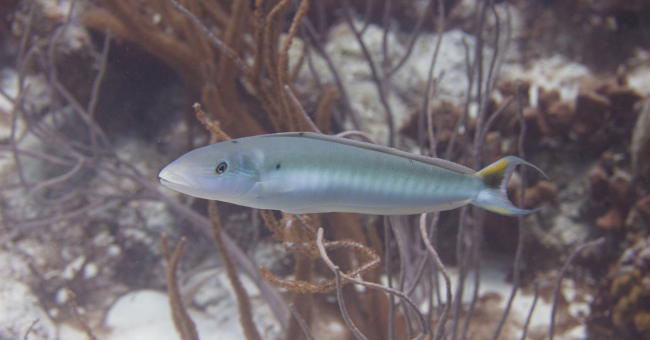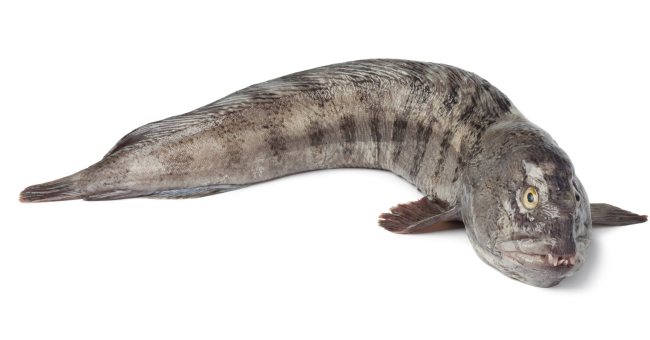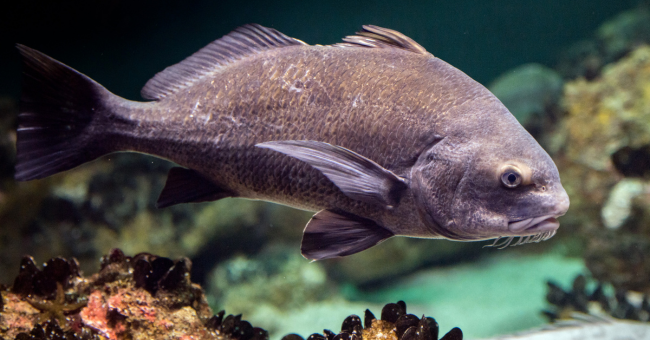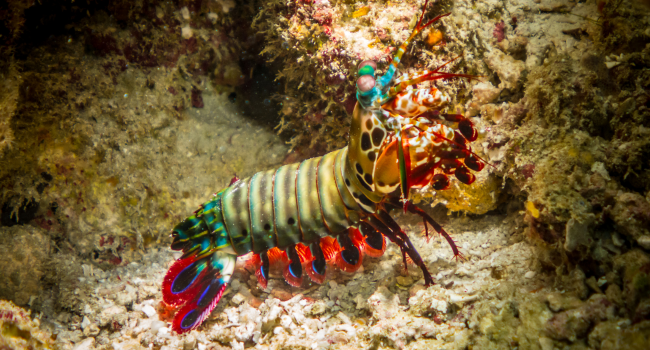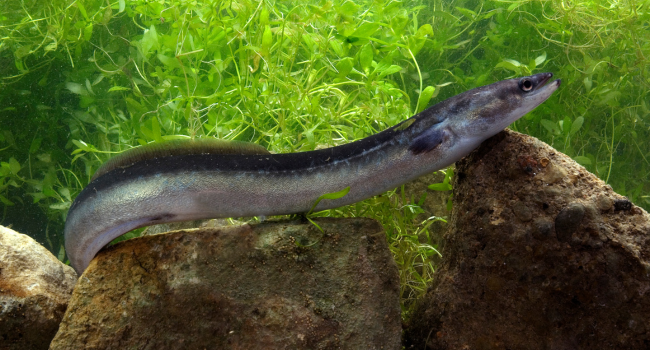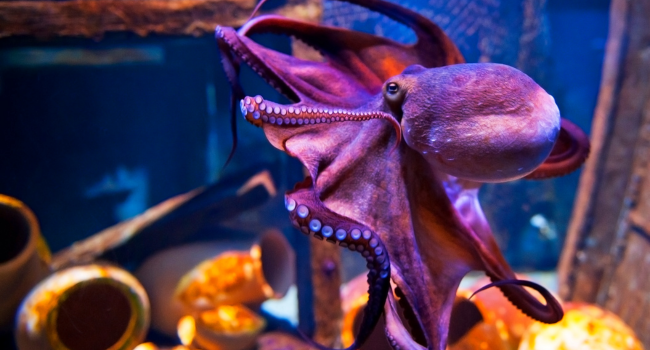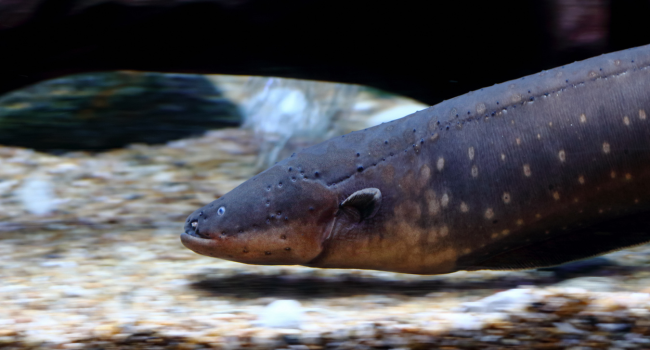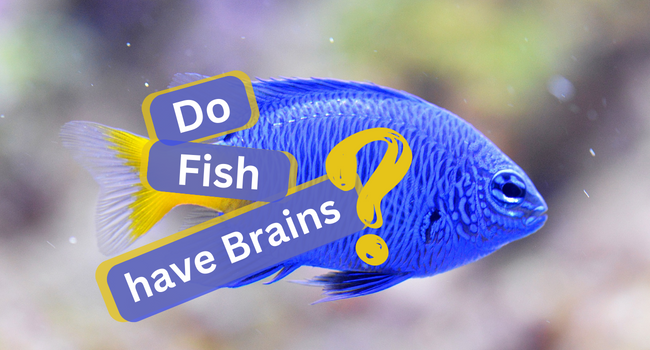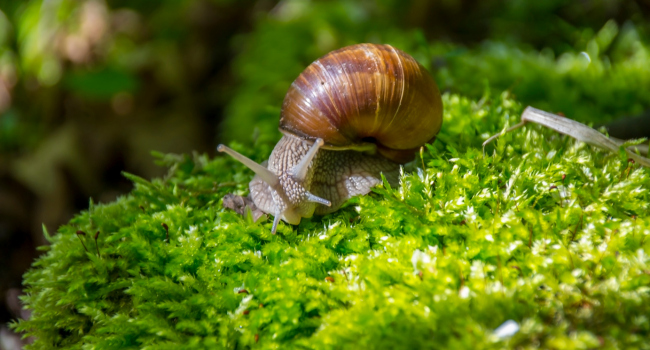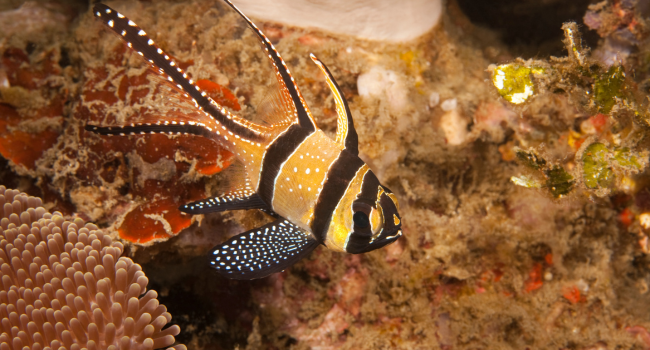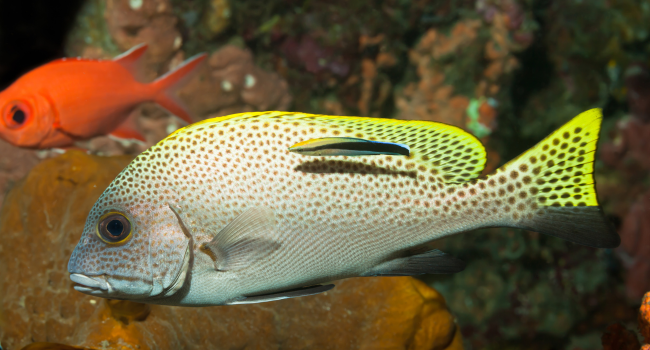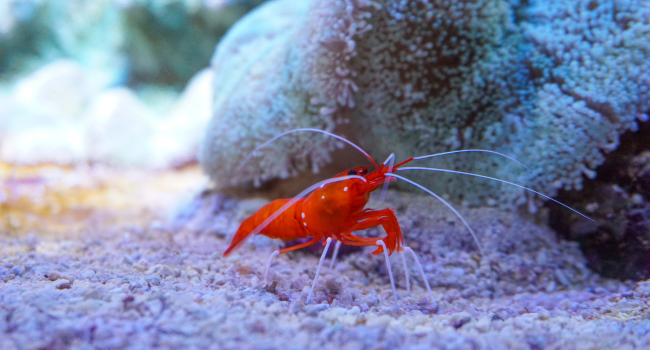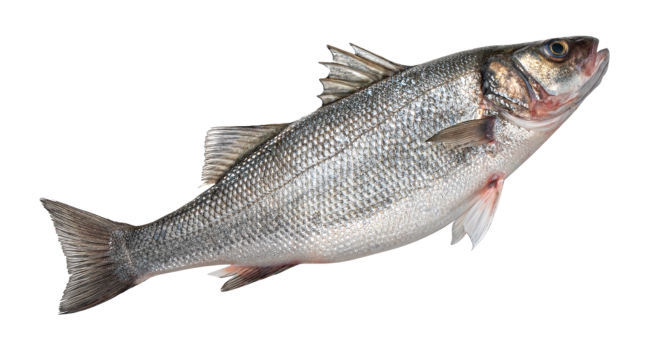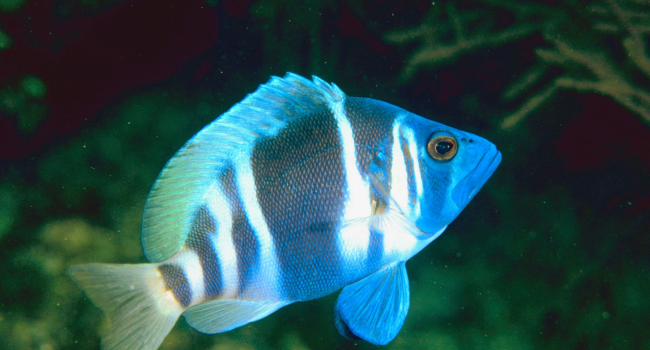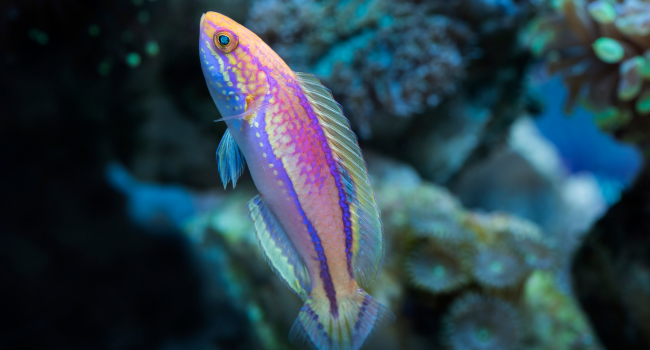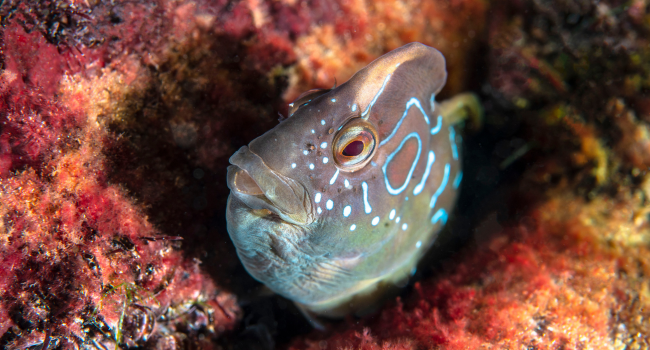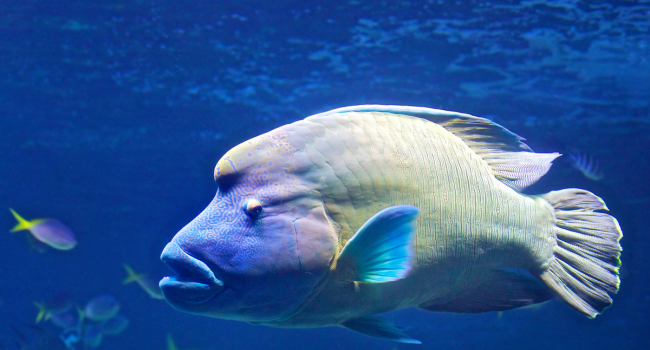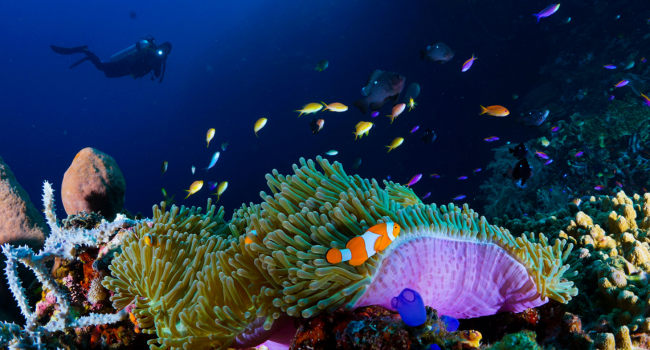In this article, you will learn about 40 Types of Fish with Fins and Scales.
We discover an amazing variety of aquatic creatures with fins and scales when we dive into the glistening depths of the world’s oceans and freshwater bodies. Each fish species has its own unique appeal and fascination, from the majestic Atlantic Salmon gracefully maneuvering their way up turbulent rivers to the crafty ambush predator, the Pike, lying discreetly in the shadows.
Join us as we explore the physical features, dietary preferences, and preferred habitats of these magnificent creatures, gaining a deeper understanding of their integral role in delicate marine and freshwater ecosystems.
Types of Fish with Fins and Scales
Here is a list of types of fish with fins and scales. Let’s learn about them.
Atlantic Salmon:
Atlantic salmon have a streamlined body with silvery scales on their sides, a blue-greenish back, and a white belly. They have black spots on their upper body and tail.
They are carnivorous, primarily feeding on small fish, shrimp, and insects.
Atlantic salmon are anadromous, meaning they are born in freshwater rivers and streams, then migrate to the ocean to grow and mature. They return to their natal rivers to spawn, preferring clean, cold, and well-oxygenated waters.
Rainbow Trout:
Rainbow trout have a sleek body with a silver coloration, a pink or red stripe running along their sides, and scattered black spots.
They are opportunistic feeders, consuming insects, small fish, and crustaceans.
Rainbow trout are typically found in cold, clear streams, rivers, and lakes. They prefer well-oxygenated waters with rocky bottoms and ample hiding places.
Bluefin Tuna:
Bluefin tuna are large and powerful fish with a metallic blue-black back and silver-white sides and belly. They have a streamlined body with a large tail fin.
They are voracious predators, feeding on fish, squid, and crustaceans.
Bluefin tuna are highly migratory and can be found in both temperate and tropical waters of the Atlantic, Pacific, and Indian Oceans.
Yellowfin Tuna:
Yellowfin tuna have a metallic dark blue back that transitions to yellow on their sides and belly. They have long, bright yellow dorsal and anal fins.
They primarily feed on fish, squid, and crustaceans.
Yellowfin tuna are found in tropical and subtropical oceans worldwide. They prefer warm waters and are often associated with floating debris or underwater structures.
Swordfish:
Swordfish have a long, sword-like bill, a tall dorsal fin, and a sleek, elongated body. They are usually dark blue-black on their upper body and lighter on their belly.
Swordfish are aggressive predators, preying on fish, squid, and occasionally crustaceans.
They are found in temperate and tropical waters of the Atlantic, Pacific, and Indian Oceans, often in deep offshore areas.
Cod:
Cod has a distinctively elongated body with three dorsal fins and two anal fins. They are usually brown to greenish on their back and sides, with a white belly.
They are opportunistic feeders, consuming fish, crustaceans, and cephalopods.
Cod are found in cold, rocky coastal waters of the Northern Atlantic Ocean.
Haddock:
Haddock resemble cod but are smaller and have a dark lateral line running along their sides. They are usually dark grey to black on their back and sides, with a white belly.
They feed on small fish, shrimp, and crustaceans.
Haddock are found in cold, deep waters of the Northern Atlantic Ocean, often over sandy or muddy bottoms.
Halibut:
Halibut are flatfish with both eyes on one side of their body. They have a diamond-shaped body with a pale top side and a white bottom side.
Halibut are ambush predators, consuming fish, crustaceans, and other bottom-dwelling organisms.
They are found in cold waters of the North Pacific and North Atlantic Oceans, typically residing on sandy or muddy bottoms.
Snapper:
Snappers have a moderately elongated body with a sloping forehead. They come in various colors, often with bright red or orange hues.
They feed on fish, crustaceans, and cephalopods.
Snappers inhabit tropical and subtropical waters around coral reefs and rocky structures.
Grouper:
Groupers have robust body with a large mouth and thick lips. They come in various colors, often with mottled patterns.
They are opportunistic predators, consuming fish, crustaceans, and cephalopods.
Groupers are typically found in tropical and subtropical waters near coral reefs and rocky outcrops.
Barracuda:
Barracudas have a long, slender body with sharp, pointed teeth. They are silver-gray in color with dark markings on their sides.
Barracudas are fierce predators, mainly feeding on smaller fish.
They are commonly found in warm, tropical, and subtropical waters near coral reefs, rocky areas, and drop-offs.
Mahi-Mahi (Dorado):
Mahi-Mahi has a streamlined body with vibrant colors, including shades of blue, green, and gold. They have a prominent forehead and a single long dorsal fin.
They are carnivorous, preying on fish, squid, and crustaceans.
Mahi-Mahi inhabits warm oceanic waters worldwide, often near floating debris and seaweed.
Red Snapper:
Red snappers have a rosy-red color with a white belly. They have a pointed anal fin and a sloping profile.
They feed on fish, crustaceans, and cephalopods.
Red snappers are found in the Western Atlantic Ocean, particularly in the Gulf of Mexico and the Caribbean Sea, often residing near rocky bottoms and artificial reefs.
Mackerel:
Mackerel have elongated, cylindrical bodies with iridescent blue-green backs, silver sides, and a white belly. They have wavy dark stripes along their sides.
They are swift predators, consuming small fish and plankton.
Mackerel are pelagic fish, found in temperate and tropical oceans worldwide, often near the surface.
Sardine:
Sardines are small, oily fish with a silver-blue color and a streamlined body. They are schooling fish and are found in large numbers in coastal waters and open seas. Sardines primarily feed on plankton and small fish. They are an important part of the marine food chain and support various predator species.
They are filter feeders, consuming plankton and small crustaceans.
Sardines form large schools and are found in temperate and subtropical waters, often near the surface.
Anchovy:
Anchovies are small, slender fish with a greenish-blue back and silver sides. They have a strong flavor and are often used in various cuisines for their taste. Anchovies are also schooling fish and feed on plankton and small crustaceans. They are abundant in temperate and tropical waters.
They are filter feeders, consuming plankton and small crustaceans.
Anchovies form large schools and are found in temperate and tropical waters, often near the coast.
Herring:
Herring has a streamlined body with a silvery appearance and a bluish-green back. They are found in large schools in both coastal and offshore waters.
Herring are filter feeders, consuming plankton and small crustaceans. They are valuable commercial fish species and are widely harvested for human consumption.
Herrings are found in temperate and cold waters of the North Atlantic and North Pacific Oceans, forming large schools.
Carp:
Carp come in various species, but they are generally known for their barbels (whisker-like structures) and robust body shape. They have a wide range of colors, including gold, silver, and grey.
Carp are omnivores and can eat a variety of food, including plants, insects, and small fish. They are commonly found in freshwater bodies like ponds, lakes, and rivers.
Carp are found in freshwater bodies like lakes, ponds, and slow-moving rivers.
Catfish:
Catfish have a distinctive appearance with long, whisker-like barbels around their mouths. They come in various species and sizes, often ranging from small to very large. Catfish are bottom-feeders, using their barbels to locate food like insects, crustaceans, and smaller fish. They inhabit freshwater environments worldwide.
They are bottom feeders, consuming a wide range of food, including fish, insects, and plant matter.
Catfish are found in freshwater rivers, lakes, and ponds worldwide.
Tilapia:
Tilapia are freshwater fish with a laterally compressed body and a distinctive spiny dorsal fin. They come in various colors, depending on the species. Tilapia are omnivorous, consuming algae, aquatic plants, and small invertebrates. They are important for aquaculture and are farmed for human consumption globally.
Tilapia is found in freshwater bodies, including lakes, rivers, and ponds, particularly in tropical and subtropical regions.
Perch:
Perch has a relatively deep and laterally compressed body with spiny dorsal fins. They are usually silvery with dark vertical stripes. Perch are carnivorous, preying on small fish, insects, and crustaceans. They are common in freshwater lakes and rivers, as well as some brackish environments.
Perch are found in freshwater lakes, ponds, and slow-moving rivers, often near vegetation and underwater structures.
Pike:
Pike have elongated, torpedo-shaped bodies with sharp teeth and a greenish color. They are voracious predators, feeding on other fish, amphibians, and even small mammals and birds. Pike are common in freshwater lakes and rivers of the Northern Hemisphere.
They are ambush predators, consuming fish, frogs, and small mammals.
Pike are found in freshwater bodies, including lakes and rivers, often in weedy or rocky areas.
Zander (European Walleye):
Zander, also known as European Walleye, has elongated bodies with sharp teeth and a distinct pattern of dark stripes on a light background. They are carnivorous and prey on fish, crustaceans, and insects. Zander is found in freshwater bodies across Europe and parts of Asia.
They primarily feed on fish and crustaceans.
Zander are found in freshwater lakes and rivers in Europe, often in clear, well-oxygenated waters.
Redfish (Red Drum):
Redfish, also known as Red Drum, has a reddish coloration and a black spot near their tails. They have a strong, muscular body. Redfish are carnivores, feeding on fish, crustaceans, and mollusks.
They are popular among recreational anglers and are found in the coastal waters of the western Atlantic Ocean.
They feed on fish, shrimp, and crabs.
Redfish are found in the coastal waters of the Western Atlantic Ocean, particularly in the Gulf of Mexico and the southeastern United States.
Sea Bass:
Sea Bass is a broad term that includes various species, such as the European sea bass and the Chilean sea bass (Patagonian toothfish). They typically have a silver to dark coloration, and some species may have distinctive markings.
Sea Bass are carnivorous, feeding on fish, crustaceans, and squid. They are found in both temperate and tropical waters worldwide.
Sea bass are found in temperate and tropical coastal waters worldwide, often near rocky structures and reefs.
Branzino (European Sea Bass):
Branzino, also known as European sea bass, is a silver-gray fish found in the waters around Europe and the Mediterranean. They have streamlined bodies, two dorsal fins, and a slightly forked tail.
They typically weigh around 1 to 3 kilograms but can grow up to 10 kilograms.
Branzino are omnivores, eating both crustaceans and smaller fish. Their habitat extends across the northeastern Atlantic and the Mediterranean Sea.
Branzino are found in the Mediterranean Sea and the eastern Atlantic Ocean, typically near rocky shores and seagrass beds.
Sole:
Sole fish are known for their flat bodies, dark topside, and lighter underside. The eyes and mouth are both located on the top side. They’re carnivores that eat worms, small fish, and invertebrates. The sole is primarily found in shallow coastal waters across the North Atlantic.
They are bottom feeders, consuming small fish and crustaceans.
Soles are found in sandy or muddy coastal areas of temperate and tropical oceans.
Flounder:
Like Sole, Flounders are flat fish with both eyes located on the top side of the body. Their color often varies to match the seafloor. They are bottom-dwellers and eat a diet of fish and invertebrates. They inhabit coastal and offshore waters in the Atlantic and Pacific Oceans.
They are bottom feeders, consuming fish, crustaceans, and cephalopods.
Flounders are found in sandy or muddy coastal areas of temperate and tropical oceans.
Turbot:
Turbot are flatfish with both eyes on one side of their body. They have a rhomboid-shaped body with a greenish-brown coloration.
Turbot is a large, flat fish native to marine or brackish waters of the North Atlantic. It has a diamond-shaped body covered with large bony tubercles on the upper side, which is usually olive or brownish. Turbots are carnivores that eat other fish and invertebrates.
They are bottom feeders, consuming fish, crustaceans, and mollusks.
Turbot is found in sandy or muddy coastal areas of the Northeast Atlantic and Mediterranean Sea.
Wrasse:
Wrasse has elongated, colorful bodies with various patterns and markings. Wrasse are colorful fish found in tropical to temperate waters. They vary greatly in size, from 5 centimeters to 2 meters. Wrasse are known for their bright, often striped, patterns.
Their diet consists mostly of small invertebrates, crustaceans, and fish eggs. They are omnivorous, feeding on small invertebrates and algae.
Wrasse are found in temperate and tropical coastal waters, often near rocky reefs and kelp forests.
Parrotfish:
Parrotfish are named for their beak-like jaws, which they use to scrape algae from coral. They are brightly colored and change their color patterns as they age. They’re most commonly found in shallow tropical and subtropical oceans around the world.
They primarily feed on algae, which they scrape off rocks and coral reefs with their beak.
Parrotfish are found in tropical and subtropical waters, particularly around coral reefs.
Triggerfish:
Triggerfish have oval-shaped bodies, often brightly colored, and are famous for their ability to lock their dorsal fin (the “trigger”) upright. They eat a variety of invertebrates and small fish. Triggerfish primarily inhabit tropical and subtropical waters.
They feed on small fish, crustaceans, and invertebrates.
Triggerfish are found in tropical and subtropical waters, often near coral reefs and rocky areas.
Amberjack:
Amberjacks are typically gold and silver with a dark stripe running from the nose to in front of their dorsal fin. They’re predatory, eating other fish and invertebrates, and are found in the Atlantic Ocean, the Mediterranean Sea, and the Pacific Ocean.
They are powerful predators, consuming fish, squid, and crustaceans.
Amberjacks are found in warm oceanic waters worldwide, often near offshore structures and deep reefs.
Queenfish:
Queenfish are sleek, silver-colored fish that are part of the Sciaenidae family. They are known for their streamlined bodies and slightly forked tails. Their diet consists primarily of small fish and crustaceans. They inhabit the waters of the Indo-Pacific region.
Spanish Mackerel:
Spanish mackerel have a slender, torpedo-shaped body with iridescent blue-green backs and silver sides. They have wavy dark stripes along their sides.
They are swift predators, consuming small fish and squid.
Spanish mackerel are pelagic fish, found in warm waters of the Western Atlantic and Gulf of Mexico, often near the coast.
Emperor Fish:
Emperor Fish are colorful, found in a variety of shades with intricate patterns. They are carnivores that eat smaller fish, crustaceans, and invertebrates. They are most commonly found in the Indo-Pacific region.
Emperor fish are found in tropical and subtropical waters, often around coral reefs and rocky areas.
Tilefish:
Tilefish have a bright, often golden coloration, with a notable crest on the head. They primarily eat benthic invertebrates and small fish. Tilefish inhabit sandy and muddy bottoms off the continental shelf in the western Atlantic Ocean.
Tilefish are found in deep waters, often around underwater structures like seamounts and ridges.
Croaker:
Croakers have a silvery body with a dark lateral line running along their sides. Croakers have a silver or gray body with a distinct bar or stripe pattern. They get their name from the croaking sound they produce. Their diet consists of small fish and invertebrates. They are found in the Atlantic and Pacific Oceans.
They are bottom feeders, consuming small fish, crustaceans, and mollusks.
Croakers are found in temperate and tropical coastal waters, often near estuaries and sandy bottoms.
Wolffish:
Wolffish have long, eel-like bodies and large, strong jaws used for eating hard-shelled mollusks. They are carnivores that eat crabs, sea urchins, and other invertebrates. They inhabit the cold waters of the North Atlantic.
They are carnivorous, feeding on fish and crustaceans.
Wolffish are found in cold waters of the North Atlantic and North Pacific Oceans, often residing near rocky areas.
Drumfish:
Drumfish, also known as drums or croakers, have a silver or gray body with a high, rounded back. They get their name from the drumming or croaking sound they produce.
Their diet consists of small fish and invertebrates. They inhabit the waters of the western Atlantic Ocean, from Nova Scotia to northern Mexico.
Drumfish are found in temperate and tropical coastal waters, often near sandy or muddy bottoms.
Conclusion:
Our journey through the world of fish with fins and scales comes to an end, and we are in awe of the astounding diversity and beauty that can be discovered below the water’s surface.
Each species plays a critical role in preserving the delicate balance of marine and freshwater ecosystems, from the strong Bluefin Tuna traversing vast oceanic expanses to the colorful Parrotfish illuminating coral reefs.
We have discovered via our investigation that these fish not only serve as a source of food for numerous people but also inspire awe and adoration in both researchers and environmental lovers.
Also Read: 10 Fish Species That Possess Brains
Do Fish Have Brains?
FAQ’s
Are all fish with fins and scales safe to eat?
Most fish with fins and scales are safe to eat and are commonly consumed by people worldwide. However, some fish may accumulate toxins like mercury, particularly larger predatory species. It’s essential to follow local guidelines and advisories regarding fish consumption to ensure safety.
Do all fish with fins and scales live in the ocean?
While many fish with fins and scales inhabit the oceans, some species thrive in freshwater bodies like rivers, lakes, and ponds. Examples include freshwater favorites like rainbow trout and Tilapia.
How can I help conserve fish populations and their habitats?
You can contribute to fish conservation by supporting sustainable fishing practices, avoiding overfished species, and advocating for the protection of marine and freshwater ecosystems. Additionally, reducing plastic waste and pollution helps maintain healthy aquatic environments.
What threats do these fish face in their natural habitats?
Fish with fins and scales face numerous threats, including overfishing, habitat destruction, pollution, and climate change. These factors can disrupt their natural life cycles and jeopardize their populations.
Are all fish with fins and scales strong swimmers?
While many fish with fins and scales are proficient swimmers, some species, like the Tilefish, are adapted to life on the ocean floor and may not possess the same swimming capabilities as pelagic species.
How do fish with fins and scales reproduce?
Most fish with fins and scales reproduce through external fertilization, where females release eggs and males release sperm into the water. Some species exhibit complex courtship behaviors or build nests to protect their eggs and young.


